It's not scary: modern parachute systems
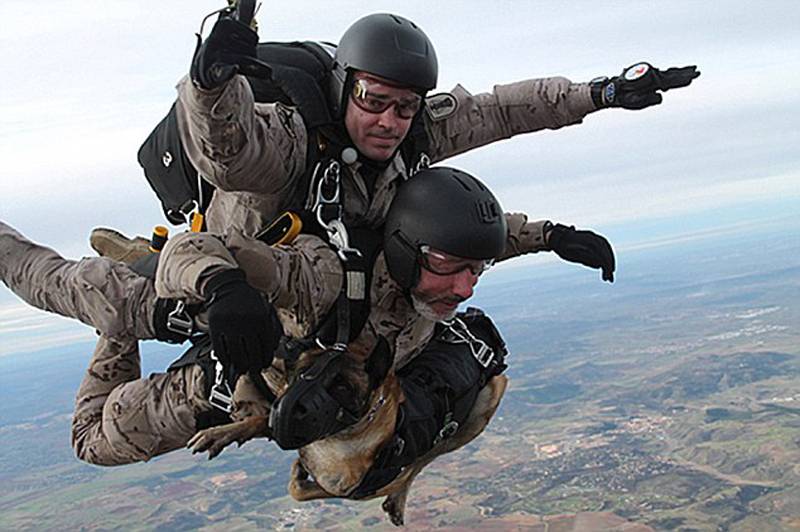
The ability to throw special operations forces on limited sites is invaluable, especially when such zones are at high altitudes or when combat dogs take part in the operation.
State structures rely more on the effect of building up the forces and means of special operations forces (SSO) and their ability to covertly enter and leave the area of operations. Some of the modern technical means used by air traffic control systems of various countries in airspace are based on new promising systems that can accurately deliver groups of operators to inaccessible areas, including high-altitude terrain with steep slopes.
These specific means allow both small and large groups in the form of a parachute assault to secretly arrive in the target areas to perform various combat missions, ranging from observation and reconnaissance to direct combat and military assistance. Today, the range of tasks, greatly expanded, includes scenarios of humanitarian aid and disaster relief operations.
In order to meet the tasks of time, it is necessary to boldly use parachutes of modern models for throwing people and goods, as well as additional facilities and equipment for high-altitude operations, such as oxygen supply and special equipment, including dogs.
Shortly after the demonstration of its RA-1 self-inflating parachute system, supplied in undisclosed quantities to the US Special Operations Command (USSOCOM), Airborne Systems North America announced that it had added another member to its paraglider family.
This latest system, designated Hi-5. It was developed in response to modern operational needs for increased range and payload with long and non-stretching parachute jumps from great heights.
A company spokesperson explained that the Hi-5 system provides “military unique opportunities and is capable of providing not only excellent protracted planning, but also allows you to change the planning angle for a quick descent and accurate landing.”
American special forces are trained in day-to-day leaps, practicing covert landing in target areas.
Planning power
Former parachute systems often represented specialized solutions, with the help of which one could perform either covert long-distance landing from great heights, or landing on water, or open jumps from small heights, more suitable for ordinary formations or large parachute assault of special forces.
According to Airborne Systems North America, the Hi-5 parachute system has 5.5: 1 aerodynamic quality (compared to existing paragliders, whose aerodynamic quality varies from 3: 1 to 4: 1) with the added ability to quickly transition to aerodynamic quality (relative planning range) 1: 1, controlled by the Glide Modulation System planning change system. (Aerodynamic quality - the ratio of lift to frontal drag)
“Unlike other methods of controlling the angle of descent, for example, using trimmers, the Glide Modulation System does not increase the overall speed of the parachute, providing a safe transition at any height. This eliminates the need for multiple spirals or maneuvers of the “snake” type at low altitude and allows for a very accurate landing due to a safe approach from a straight line, ”said a company representative.
“The paratrooper completely controls his position and moment of landing on the target area. In addition to the qualitative leap in technology relative planning distance, the Hi-5 system has a number of positive qualities. For a parachuter, it is easy to maintain and easy to use; for a parachute handler, the process of its installation is intuitive. It bridges the gap between our Intruder RA-1 and Hi-Glide parachutes, providing a wing with high aerodynamic quality, providing precise landing and the ability to safely descend into hard-to-reach areas. ”
Parachute system Hi-5 developed by Airborne Systems North America
Its design is based on additional brakes built into the parachute front lines, which allows the parachutist to more smoothly change the aerodynamic quality of the dome from 5.5: 1 to 1: 1 (for example, if 5.5: 1, then for every 100 meters the height loss is the maximum planning distance at zero wind is 550 meters). According to the company, the parachute system has a spare dome and provides almost silent operation during clandestine operations.
The Hi-5 system includes an elliptical paraglider dome made of 11 segments that can be deployed at a maximum altitude of 7600 meters above sea level. However, the parachute must be opened not lower than the height of 1050 meters above sea level. The parachute can be opened in various ways, varying from the exhaust sling or ejected by the spring of the exhaust parachute to systems with manual opening.
However, since the introduction of the Hi-5 system in October 2016, Airborne Systems North America developed the Hi-5 parachute with a larger dome, its area was increased from 34 m2 to 39 m2 to increase the load capacity from 220 to 250 kg.
“This allows us to fit into the mass range for tandem jumping, which we have never considered in the past,” explained the company's chief technologist.
“The dome of the 39 m. The 2 offers the ability to plan as you like, or land as precisely as you want, while you can carry a second person or additional equipment. Operational requirements for a modern soldier are expanding, our soldiers need to carry more equipment, overcome long distances and land in a confined space accurately and safely. Hi-5 meets all these requirements and the 39 xNUMX dome is the only path to the future. ”
At the end of 2016, the US Army announced its intention to purchase the advanced RA-1 Parachute System Advanced Ram Air Parachute System (photo below), from which paratroopers qualified for both long and non-tightening jumps (with a sling line) can jump from 10000 meters ). It should replace the existing MC-4 Ram Air Personnel Parachute parachute systems.
Conquest heights
On the special operations market, a significant role is played by the company Complete Parachute Solutions (CPS), which is engaged in the development of technology for jumping from high altitudes. According to CPS representative John Bast, his company is expanding its capabilities, including as part of sponsorship expeditions to Mount Everest in 2013, 2014, 2015 and 2016, the purpose of which is to conduct tests at high altitudes aimed at developing new requirements for modern operational space.
Bast explained that the CPS Everest team recently returned from the Himalayas “with new landings from high altitudes” and attested the Multi-Purpose Tactical Oxygen System. After a series of helicopter jumps, the CPS team said it was back from this trip with another 4 world record in long jumps related to usability, high altitude, accuracy, and payload.
The initial jumps were carried out from helicopters taking off from the Syanbosh take-off field in Nepal. USSOCOM paratroopers, and specifically representatives of the Navy Special Forces and the US Marine Corps Special Forces, made jumps from altitudes of about 3800 meters above sea level, fighting during descent from strong winds, low temperatures and oxygen deficiency when hypoxia becomes a serious problem. In the fight against hypoxia, CPS specialists relied on the universal oxygen-respiratory system of the new generation MTOS (Multi-Purpose Tactical Oxygen System) of the British company Top Out Aero, which allows operators to breathe freely at “extreme heights”.
However, MTOS was used not only during parachute jumps, this system was also used when performing reconnaissance tasks in high-altitude areas, preparing landing sites and in other high-altitude tasks in very difficult terrain.
World records, beaten by CPS, included the first landing at a height of 3800 meters parachutist with less than 50 jumps, which was trained to perform special tasks at high altitudes. According to Basta, instructor and former marine sniper Kaylie Voichik became the first “parachutist with the least number of jumps that successfully landed in strong wind and thin air, which is typical of 3800 meters altitude. This is a serious test of aggressive dome control when performing special tasks and landing preparation programs provided by CPS. ”
As for altitude records, the CPS instructors completed the program of jumps and landings at 4500 meters altitude with Ama Dalam. In the same place, the reservist of the Marine Corps, Captain Carroll, successfully completed a high jump with a backpack weighing 32 kg. Then the group moved to Gorak Shep, where she made landings at a height of almost 5200 meters, and to Kala Pattar mountain, where jumps were made with a landing at a height over 5300 meters.
Finally, new records for tandem jumping and landing at an altitude of 5100 meters were also broken, for which parachutes TP460 and Special Operation Vector 3 Tandem Sigma were used. A similar concept can be used to drop personnel not trained in protracted jumps to the area of operation, where he can continue to perform his special task.
The release of parachute groups is often accompanied by high-precision discharge of cargo platforms delivering tactical vehicles, speedboats and other special equipment to the ground.
Shipping special cargo
In addition to parachuting personnel, cargo and other special means, including combat dogs, parachutes remain the most important element of the MTR in a modern operational environment.
NATO MTRs of the NATO countries, including the UK and France, have recently completed an assessment of air delivery systems designed to throw high-speed boats to the surface of the sea. These include the Airborne MCADS (Maritime Craft Aerial Delivery System) marine delivery system from Airborne Systems, which is capable of carrying boats up to 12 meters in length, including the Offshore Raiding Craft boats 9,5 meters long by the British company Holyhead Marine.
Boat delivery
The British Ministry is planning to purchase a total of 2017 platforms for the delivery of boats and boats in the non-stop type MCADS in 2018-14. PRIBAD 21 Platforms (Platform Rigid Inflatable Boat Aerial Delivery) can be dropped from the rear ramp of C-130 Hercules, A400M, C-17 and C-5 military transport aircraft. French special forces also tested this system for the delivery of their rigid-inflatable Ecume boats manufactured by Zodiac Milpro.
This possibility remains popular in the MTR of many countries whose units are capable of delivering small-sized vessels over long distances in order to introduce and evacuate special groups.
After discharge from the cargo compartment of the PRIBAD platform aircraft, an exhaust parachute is first released to pull out the main dome. Following the load on their individual parachutes, such as the RA-1, a special group jumps. In combat conditions, in order to ensure the secrecy of the operation after splashing, the pallet of the PRIBAD system may be flooded, although during combat training the pallets due to special floats usually remain on the surface for reuse.
In addition, the British Ministry of Defense is considering a similar technology for a safe throwing tactical vehicles and other property onto the land. In 2016, combat units evaluated Airborne Systems' Medium Stress Parachute (MSP) parachute capable of landing loads up to 3175 kg, allowing you to throw various vehicles, including special MRZR-2 and MRZR-4 vehicles from Polaris Defense.
As in the case of the PRIBAD 21 platform, the MSP system’s exhaust parachute forces the main canopy of the pallet to open with pneumatic damping, which can safely deliver tactical vehicles to the ground. The MSP system is designed for landing from military transport aircraft C-130J and А400М.
However, the Ministry of Defense is already striving to replace the updated MSP technology with the ATAX air delivery system from Airborne Systems, which is able to deliver cargo with a maximum mass of 7260 kg. The ATAX system is designed to deliver land and offshore platforms, although sources in the defense sphere could not confirm when the transition to the new systems will occur.
As Bast explained, CPS has developed another version of the Complete Parachute Autonomous Delivery System, which is designed for the delivery of ultra-light loads weighing from 115 to 270 kg.
Managed Cargo
“This system of controlled cargo delivery also provides a high level of accuracy of landing at a given point and, as a rule, is used by teams performing long jumps as a means of increasing the effectiveness of the combat mission. It provides additional opportunities for search and rescue teams to accurately deliver the necessary medicines and rescue equipment, ”he continued, pointing out the need for such military specialists in the field of humanitarian assistance and disaster relief operations.
“Many units of the Ministry of Defense, which are staffed by specialists of the MFF category (military free fall, military personnel capable of performing long jumps), also face the tasks of responding to natural disasters in remote areas with very limited areas for landing. Constantly tested in very harsh conditions on Everest, the MS-360 parachuting wing has proven to be an extremely effective “universal parachute” that allows rescue teams to land accurately in restricted landing areas, ”explained Bast. He also noted that the parachute fire brigades of the Forest Protection Agency of the USA began to move from existing round parachutes to CPS CR-360 paragliders for more accurate delivery of personnel to specified areas.
Cargo platforms of high-precision delivery, indicated by infrared lamps for positive identification on their own, are approaching the landing site.
Dog work
Also, one should not forget about the delivery of working dogs (or K-9) to the area of operation, which are "fastened" to operators deployed on parachute systems such as paragliders. As Bast explained, the use of K-9 in search and rescue and combat operations has grown exponentially in recent years, as the MTR units especially rely on dogs for a variety of tasks, ranging from surveillance / reconnaissance, direct fighting, military and humanitarian assistance to emergency situations.
CPS has specifically developed two solutions for the international community, the K-9 Jump Bag and the Mannequin Solution, to support operations and training scenarios, respectively, including tandem jumps of the operator with the dog.
The list of CPS products for high-altitude jumps, many of which are in service with MTRs from different countries, also includes reinforcement elements, for example, parachute slings, clamps and slings. In addition, the company's portfolio includes parachutes of the MS, М1 and М2 series, specially created for “a large number of disclosures, distinguished by excellent stability, maneuverability and increased range”.
“The MS М1 / М2 models are currently being used by special units around the world, providing the opportunity to land on limited sites using different types of braking systems,” said Bast. He described the MS-M4 model as a system from which you can jump either with a long jump or with an exhaust line, unlike the MS-M1 and MS-M2 models, which are intended only for long jumps.
“A parachute for long and short jumps MS-360-M4 is an improved version of MS-M2. The scheduling characteristics were significantly improved by more than 33%, which made it possible to obtain aerodynamic quality (relative planning distance) from 3.5: 1 to 4: 1, depending on the configuration and load. ”
“Our experimental program showed that several minor modifications to the design of existing MS parachutes, mainly changes in the shape of the dome and brakes, improved the aerodynamic quality. MS-M4 is based on a mixed design, by preserving polyester suspension lines, undesirable fluctuations associated with stretching lines are eliminated, which may have affected the quality of planning, ”explained Bast.
Parachute MS-360-M4 has a dome area 33 m2, wing span 9 meters, it is able to carry cargo up to 205 kg. It is possible to jump with it both from the height of 10500 meters (standard height of the flight of the airliner) and (after a small adjustment) from the minimum height of the entire 900 meters.
Meanwhile, Russian special forces began to receive a special parachute system Arbalet-2, developed by SPE Zvezda. According to the Ministry of Defense, the Russian special forces of special-purpose brigades tested equipment under arctic conditions for the entire 2016 year, conducting landings of troops from low altitudes in order to quickly enter specified areas.
According to the company Zvezda, with the parachute system of special purpose Arbalet-2 you can make jumps, both from airplanes and from helicopters at flight speeds up to 350 km / h; with a flight mass up to 160 kg, it ensures reliable operation at altitudes up to 4000 meters.
Special parachute system Crossbow-2
With a vertical descent speed of no more than 5 m / s and a horizontal descent speed of at least 10,5 m / s, the planning parachute Arbalet-2 has excellent maneuverability (turning to 360 degrees over 8 seconds), including a steady decline in a turbulent atmosphere. The parachute is also activated by a manual opening link, both with the right and with the left hand.
Since the general operational area retains a strong emphasis on the use of MTRs, developed capabilities are necessary for delivering personnel to complex areas of combat operations. Parachute landing from great heights will remain the main tactical technique of special forces seeking to covertly land in designated areas. A constant increase in the aerodynamic qualities of parachute systems will enable aviation deploy airborne groups from a safe distance and safe altitudes and minimize the risk of shelling by enemy anti-aircraft systems, in particular portable anti-aircraft missile systems.
Materials used:
www.shephardmedia.com
airborne-sys.com
cpsworld.com
www.zvezda-npp.ru
www.gdls.com
www.parachutist.ru
www.parashut.com
www.pinterest.com
www.wikipedia.org
en.wikipedia.org
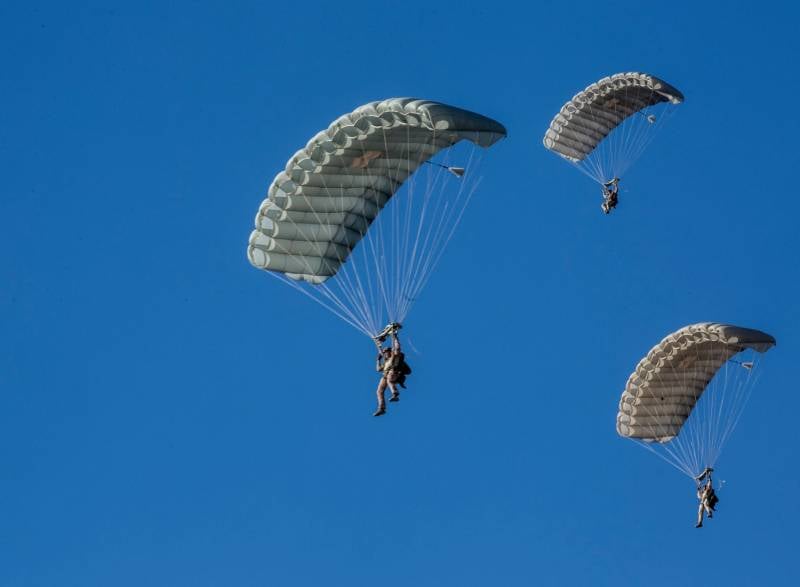
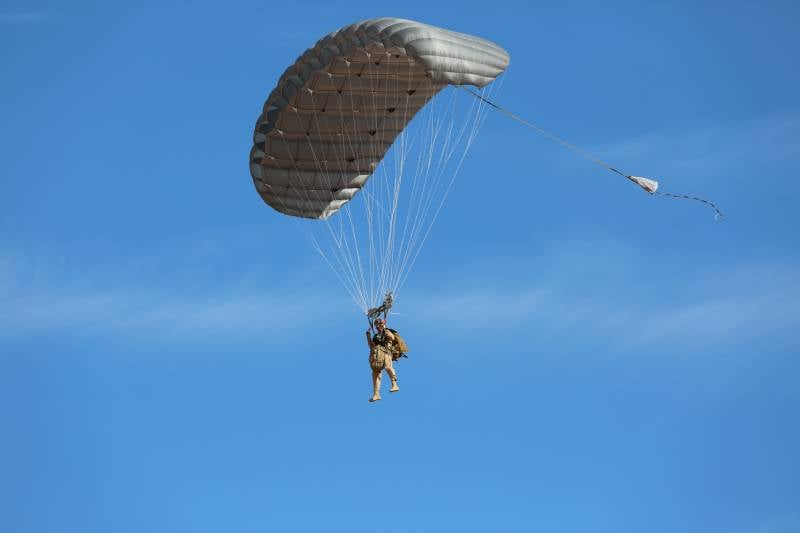
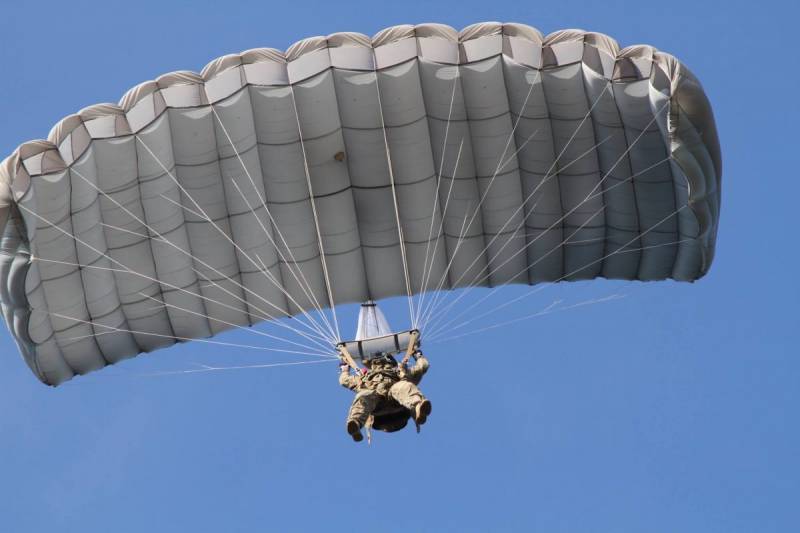
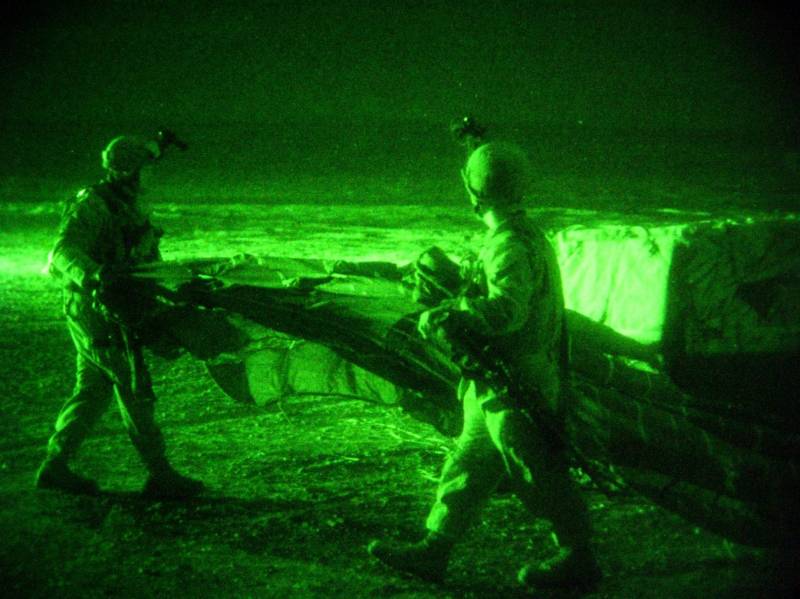

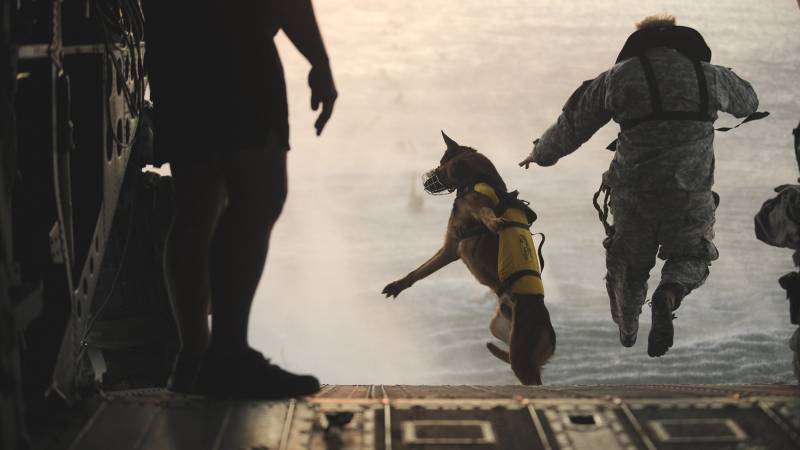
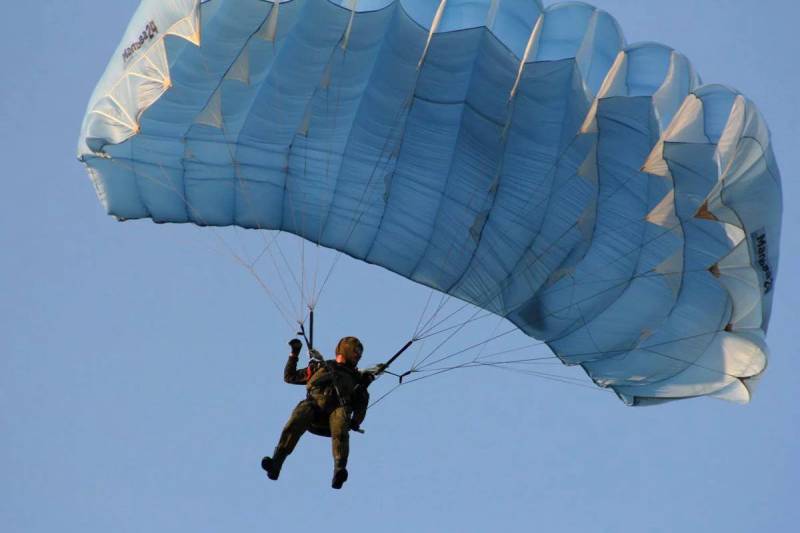
Information